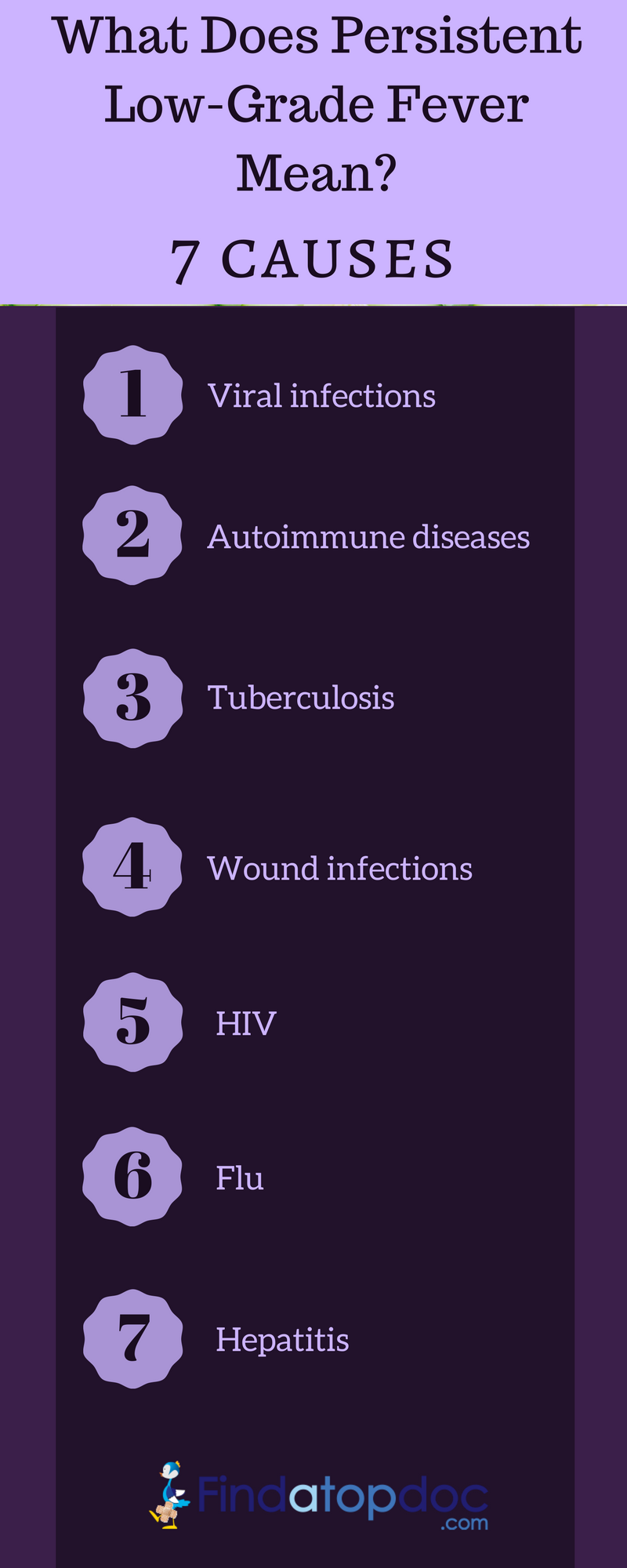
Source
Symptoms
Depending on what's causing your fever, additional fever signs and symptoms may include:- Sweating
- Chills and shivering
- Headache
- Loss of appetite
- Irritability
- General weakness
A Regular Fever vs. a Low-Grade Fever (LGF)
You can monitor your fever by simply taking your temperature. A low-grade fever is often classified as an oral temperature that is above 98.6° F (37° C) but lower than 100.4° F (38° C) for a period of 24 hours. Fevers, though uncomfortable, play a key role in helping your body fight off many infections.What causes low-grade fever?
Fevers often accompany infections. Body temperature can be elevated by physical activity and environmental factors, such as wearing heavy clothing or a high ambient temperature.Infectious causes of low-grade fever:
- Bacterial infection, such as Strep throat or scarlet fever
- Cellulitis (skin infection)
- Childhood diseases, such as chickenpox, fifth disease, measles, mumps, whooping cough
- Cold, flu, or other viral infections
- Ear infection
- HIV or AIDS
- Lung infections, such as bronchitis, pneumonia, and tuberculosis
- Mononucleosis
- Sinus infection
- Urinary tract infections